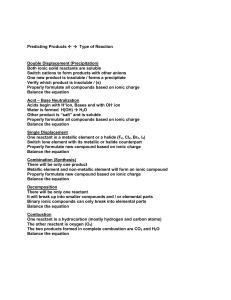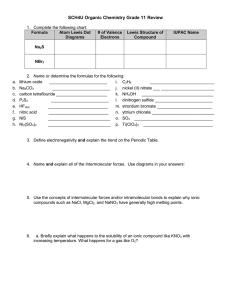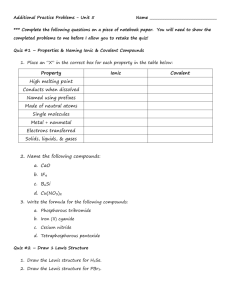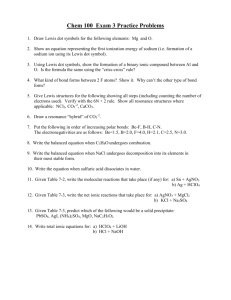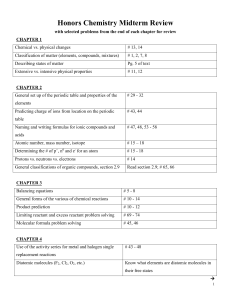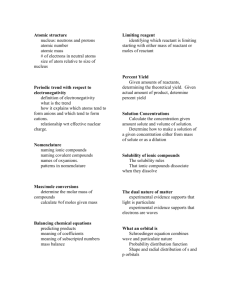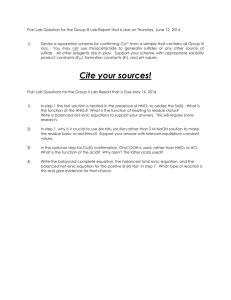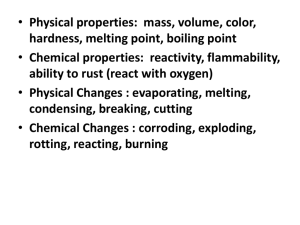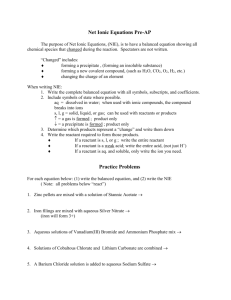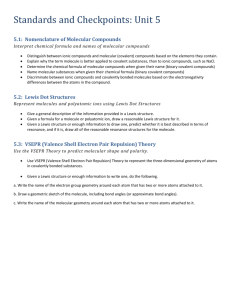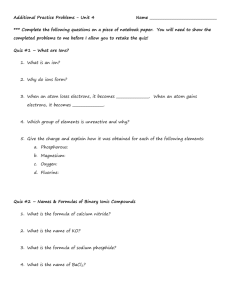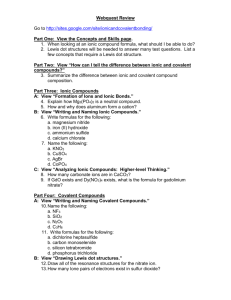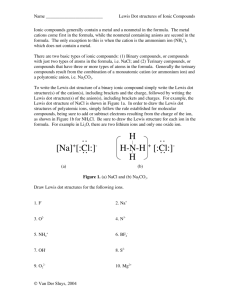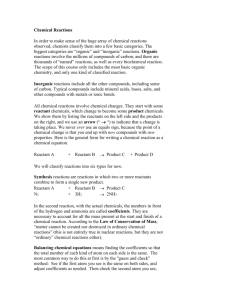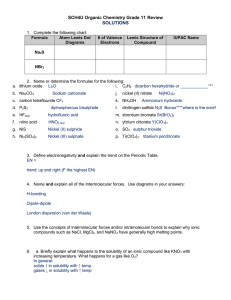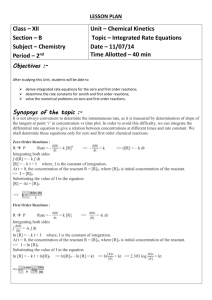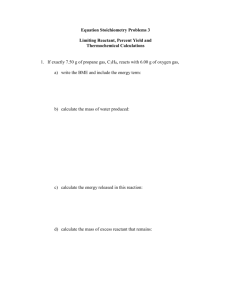PreMid#2 - Seattle Central College
advertisement
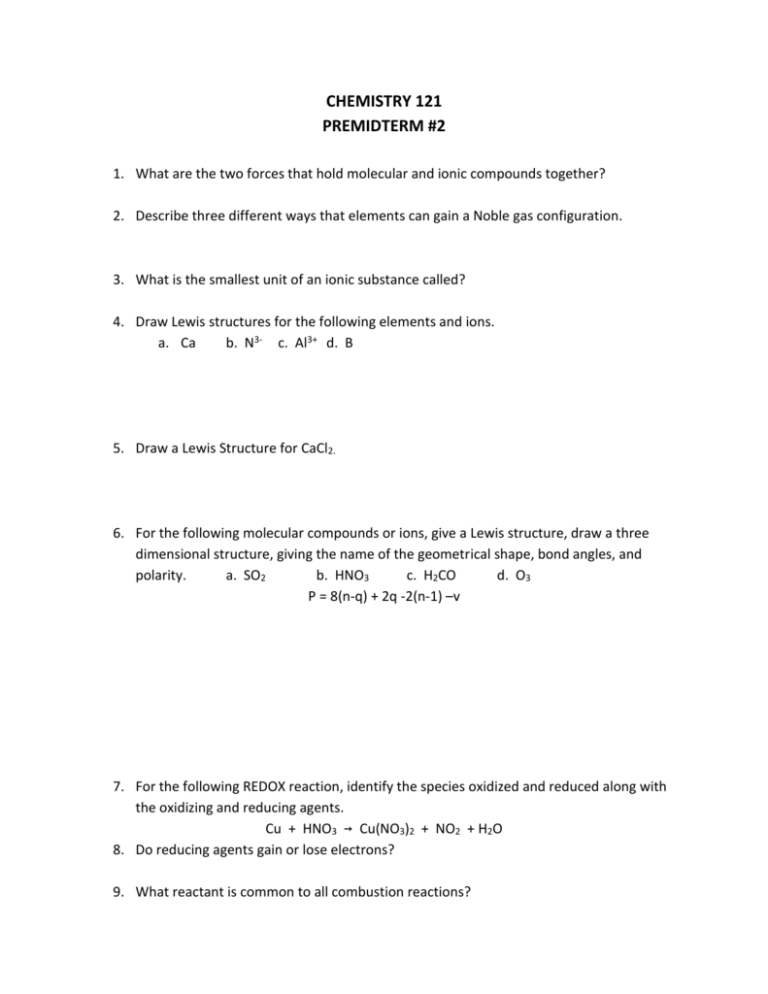
CHEMISTRY 121 PREMIDTERM #2 1. What are the two forces that hold molecular and ionic compounds together? 2. Describe three different ways that elements can gain a Noble gas configuration. 3. What is the smallest unit of an ionic substance called? 4. Draw Lewis structures for the following elements and ions. a. Ca b. N3- c. Al3+ d. B 5. Draw a Lewis Structure for CaCl2. 6. For the following molecular compounds or ions, give a Lewis structure, draw a three dimensional structure, giving the name of the geometrical shape, bond angles, and polarity. a. SO2 b. HNO3 c. H2CO d. O3 P = 8(n-q) + 2q -2(n-1) –v 7. For the following REDOX reaction, identify the species oxidized and reduced along with the oxidizing and reducing agents. Cu + HNO3 → Cu(NO3)2 + NO2 + H2O 8. Do reducing agents gain or lose electrons? 9. What reactant is common to all combustion reactions? 10. Give the oxidation number of bromine in the following compounds containing bromine. a. HBrO4 b. HBrO3 c. HBrO2 d. HBrO e. Br2 f. HBr 11. Give and ionic equation showing the dissolution of MgBr2. 12. Write a balanced equation for the formation of ammonia (NH3) from nitrogen and hydrogen. a. How many grams of ammonia are formed from 56.0 g nitrogen and 8.00 g of hydrogen? b. Which reactant is in excess? c. Calculate the mass of the excess reactant. d. Find the % yield if 58.0 g of ammonia is recovered in the laboratory. 13. How many electrons fill the following a. An orbital b. A p-sublevel c. The fifth energy level 14. What body function does sweating control? 15. Answer the following questions about when gaseous water goes directly to a solid (ice). a. What is the process called? b. Is it endothermic or exothermic? c. Write a balanced equation describing this process using (s), (l), (g), symbols after each formula to describe the states of water d. Does the environment surrounding this change become warmer or colder? 16. The following is a balanced thermochemical equation for the combustion of butane. 2C4H10 + 13O2 → 8CO2 + 10H2O ΔH = - 2877 kj/mole a. Find the mass of butane required to produce 3.66X108 kg of energy. b. Find the mass of water produced during the process of releasing 3.66X108 kj of energy.


